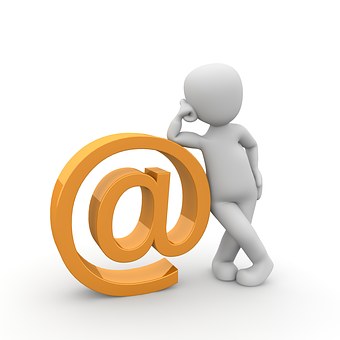Email Not Receiving
In the age of lightning-fast digital communication, emails have become the lifeblood of our personal and professional interactions. With a few keystrokes, we can effortlessly send messages across the globe, bridging distances and connecting with people from all walks of life. Yet, amidst this virtual symphony, a disconcerting problem emerges – the perplexing issue of not getting emails.
We’ve all experienced the sinking feeling of expecting an important email, only to find it mysteriously missing from our inbox. Whether it’s a crucial work update, an invitation from a friend, or an essential piece of information, the absence of these messages can cause anxiety and disruption in our daily routines.
If you’ve ever found yourself caught in this digital labyrinth, fear not. In this comprehensive blog, we embark on a journey to decode the reasons behind the elusive vanishing act of emails. From wandering through the complexities of spam filters and email rules to navigating the labyrinth of server errors, we will shed light on the common culprits that prevent emails from reaching their intended destination.
Join us as we demystify the inner workings of email delivery, equip you with valuable troubleshooting insights, and offer practical solutions to ensure that your emails sail smoothly through the vast ether of the digital world. Let’s unravel the enigma and restore the seamless flow of communication in your inbox. Welcome to our guide on understanding the confounding dilemma of emails not being received.
How to Fix Emails not receiving Issues?
Experiencing not receiving mail can be frustrating, especially when you rely on it for communication and essential messages. There are several potential reasons why you cannot receive emails, and understanding these causes can help you troubleshoot and resolve the problem to get your email received. Here are some common reasons why you are not getting emails:
- Email Filter Settings: If you’re not receiving mails. Check your email’s spam or junk folder. It’s possible that the emails you’re expecting are being filtered out as spam. Whitelist the sender’s email address or mark their messages as “Not Spam” to ensure that your emails received.
- Over Quota: New emails may not be delivered, causing mail delivery problems. If your email account has reached its storage limit. Delete unnecessary emails or archive them to free up space.
- Incorrect Email Address: If you cannot receive emails, Double-check the email address of the sender. If they have misspelled your email address or used an outdated one, the emails will not reach your inbox leading to email not receiving issues.
- Forwarding Rules: If you have set up email forwarding to another address, check the forwarding settings. Any issues with forwarding configurations can cause mail delivery problems.
- Email Delivery Delay: Sometimes, email servers experience delays, and it may take some time for emails to be delivered. Wait for a while and see if the messages eventually appear in your inbox.
- Server Issues: Email servers can encounter temporary outages or technical problems, resulting in unable to receive emails. Check with your email provider for any known server issues or outages.
- Blocked Sender: If you’ve accidentally marked a sender as spam or blocked their emails, you will be unable to receive emails. Review your blocked sender list and remove any unintended entries.
- Email Client Configuration: If you use an email client like Outlook or Thunderbird, check the account settings to ensure they are set up correctly. Incorrect configurations can cause email not receiving issues.
- Antivirus or Firewall Interference: Overly aggressive antivirus or firewall settings may block incoming emails. Temporarily disable these security features to check if they are causing mail delivery problems.
- Email Blacklists: If your email address or domain is on an email blacklist, some email servers might reject your messages, resulting in not getting emails. Check with blacklist services to see if you’re listed and take steps to remove your email from the blacklist if necessary.
Remember, each email service provider and email client may have specific settings and features that can impact email delivery. If the problem persists and you’ve tried the troubleshooting steps, seeking technical support from your email provider may be necessary to identify and resolve the issue.
How to Fix Email Not Sending Issue:
If you cannot send emails, here are some potential reasons for mail delivery problems, along with their corresponding solutions:
- Incorrect Email Address: If the email address you’re trying to send to is incorrect, you’ll typically get an error message or a bounced email and it will cause an email not sending issue. Make sure to double-check the recipient’s email address for any typos or errors.
- Email Server Issues: There isn’t much you can do if the issue is with the email server besides wait for the provider to fix it. However, you should contact your provider’s customer service to confirm this email not sending issue.
- Attachment Size: If your email has an attachment that is too large, try to reduce the size of the file or use a file-sharing service like Dropbox or Google Drive, and then share the link to the file in your email.
- Internet Connection: Ensure that your internet connection and check if it’s stable. If it isn’t, try resetting your router or contacting your internet service provider.
- SMTP Settings: If your SMTP settings are incorrect, you’ll need to correct them. These settings should be available on your email provider’s help or support site.
- Full Inbox or Storage Limit: Delete or archive old emails to clear up storage space. Consider upgrading your storage if you frequently hit the limit.
- Firewall or Security Software: Check the settings on your firewall or security software to ensure they’re not blocking your emails. You might need to add your email client to the list of trusted applications.
- Spam Filters: If your emails are being marked as spam, make sure you’re not using spam trigger words in your subject line or email body. Also, ask the recipient to check their spam folder and mark your emails as “not spam.”
- Incorrect Login Credentials: If your email login credentials are incorrect, you’ll need to update them in your email client. If you’ve forgotten your password, use your email provider’s password recovery tool.
Remember, these are but a few potential causes and their accompanying fixes. The particulars of your email provider and client, as well as other variables, can affect the precise reason of mail delivery issues.
Conclusion:
In conclusion, the frustration of not receiving important emails can disrupt our daily communication and workflow. However, armed with a better understanding of the potential causes and troubleshooting steps, you can take proactive measures to resolve the issue.
We have explored various reasons behind emails not coming through, including spam filters, incorrect email addresses, storage limitations, and email client configurations. By diligently checking spam folders, verifying sender details, managing storage, and reviewing filtering settings, you can significantly improve the chances of receiving all relevant emails in your inbox.
Additionally, staying informed about your email provider’s status, keeping your software updated, and seeking assistance from your email support team when necessary can ensure a smoother email experience.
Remember, email communication is an integral part of our personal and professional lives, and maintaining its reliability is vital. By applying the tips and solutions outlined in this blog, you can take back control of your inbox and ensure that no critical message goes unnoticed. To know more about our support services you can visit the website Homepage.

